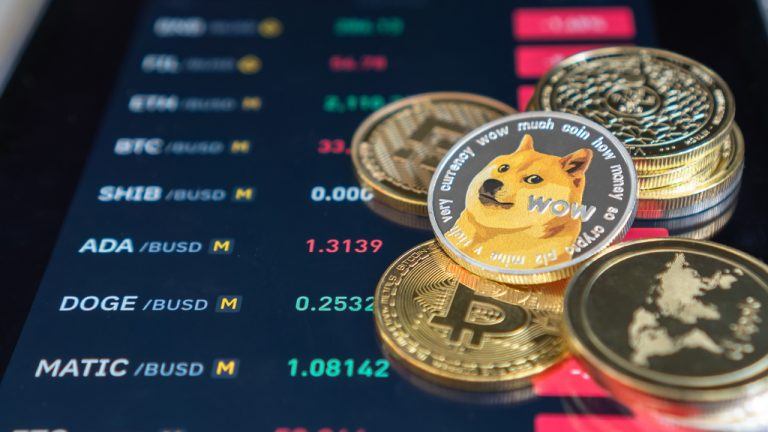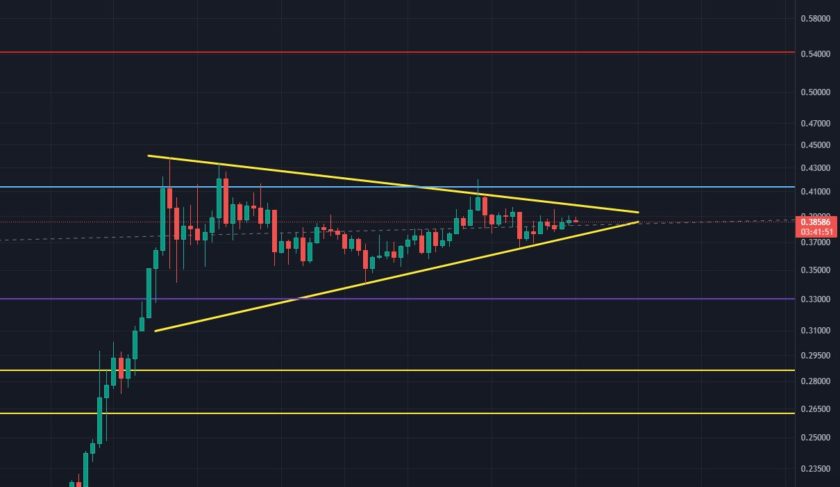Cryptocurrency and blockchain firms are attracting billion-dollar valuations as the space continues to see major investment in 2021. The likes of exchanges Coinbase and Kraken have had mind-boggling numbers attached to their plans to raise funds, with the former set to go public through a direct listing and the latter preparing for a lucrative fundraising round.
Since it formally announced its plans for a public listing, Coinbase has been tipped to be valued at around $28 billion by cryptocurrency analytics firm Messari. Meanwhile, news of Kraken’s efforts to receive investment from private firms in a new fundraising round saw insiders tout a valuation of $10 billion or more.
The sheer value of these investments is adding credence to the growing popularity of cryptocurrencies, with the total market capitalization close to $1.5 trillion. While investors have climbed directly into the crypto markets, others are looking for exposure to the biggest companies in the ecosystem with the prospect of major returns on investment in the future.
Kraken says $10 billion valuation is low
Cointelegraph reached out to Kraken to unpack its plans for a fresh fundraising effort in 2021, given that its last fundraising round through Bnk To The Future in 2019 amassed $13.5 million from 2,000 investors and valued the firm at $4 billion.
Two years later, Kraken is in talks with top investors that reportedly include Fidelity, Tribe Capital and General Atlantic. A spokesperson for the firm told Cointelegraph that the numbers being touted in initial reports may be underplaying Kraken’s actual worth: “We’re not going to speculate too much as to what the company is worth, but $10 billion would be a low valuation for us.”
Kraken also held back from outlining the specifics of how it would use the capital raised from investors but noted that it was in a very strong financial position and had received plenty of attention from potential capital lenders, with the spokesperson stating: “We’ve had a lot of inbound interest. Kraken is cash-flow positive and has a very strong balance sheet. If we were to raise new capital, it would be either for strategic reasons or to accelerate the pace of acquisitions.”
The company spokesperson also agreed that the appetite for investment in firms like Kraken is further legitimizing the crypto and blockchain space as a burgeoning sector that is building the future of finance and payment systems, adding:
“The cryptocurrency industry has reached a level of maturity and mainstream acceptance where an entry into public markets is beginning to make sense. However, this is still very much in the early days; Kraken, for example, is unlikely to consider a flotation until 2022 at the earliest.”
Lessons from the past
It has been three decades since the internet was unleashed onto the world, and those early years are comparable to what is happening in the cryptocurrency and blockchain industry. Many firms attracted major investment and fizzled out into nothing, while firms like Amazon went on to become global leaders in the space.
A similar trend was seen during the rise of initial coin offerings in 2017 as some firms with half-baked ideas attracted major investment but failed to deliver on the projects they started. Others, however, went onto build products and services that have been extremely successful, while many of the biggest cryptocurrency exchanges and payment service providers continue to thrive.
Mati Greenspan, founder of crypto advisory firm Quantum Economics, told Cointelegraph that a parallel can be drawn between the early days of the internet in the 1990s and the nascent blockchain and crypto space’s infancy in the 2010s. As Greenspan explained, forward-thinking investors ultimately have to weigh the potential risks and rewards of investing in emerging markets and technology:
“It’s quite amusing how big corporations have a tendency to resist new technologies. Both in the late 90s with the internet and throughout the twenty-teens with blockchain, we saw this kind of five stages of acceptance playing out. Ultimately, those who embrace new technology bear a risk but the rewards are often immense.”
Computer scientist Xinshu Dong, who co-founded sharding-enabled blockchain platform Zilliqa, echoed Greenspan’s sentiments of parallels between the dot-com bubble and recent developments in the cryptocurrency space.
Dong told Cointelegraph that some investments are made on speculative projections and unproven market demand, both during the 2017 ICO era and the current cryptocurrency market boom: “When the Dot Com bubble burst, 51% of the tech startups shut down and $1.7 T in capital was wiped.” He further added that while some firms like Pets.com closed up shop, numerous other companies like Amazon, Qualcomm and Cisco rose to prominence because “They offered ubiquitous services that survived the crash albeit with significant valuation dips.”
Dong said that hard lessons were learned, and many venture capitalists began investing in the technology space with more caution. Investors started backing founders with both ambitious visions and the ability to execute who were building for large market sizes. The growth of the decentralized finance space is a prime example of this change in investor behavior, according to Dong:
“Crypto is a blue ocean and the opportunities are still open for grabs. We see more investors starting to look for long-term outsized returns rather than chasing ‘hot deals’ at the moment. Teams who can be creative, execute their visions and be patient to find their product market fit will win the market share.”
Price tags aren’t surprising
The industry’s biggest firms attracting billion-dollar price tags is hardly surprising given the amount of investment that has gone directly into the cryptocurrency markets over the past six months.
Grayscale Investment’s various cryptocurrency trusts have seen billions of dollars pouring into its coffers, while mainstream institutions like MicroStrategy and Elon Musk’s Tesla have each bought more than $1 billion worth of Bitcoin (BTC).
With major institutional interest driving capital into the ecosystem, Greenspan believes that the valuations of firms like Coinbase and Kraken being touted by appraisers are backed by fundamental business performance metrics like user numbers and revenues and that investors are simply trying to gain first-mover advantage, as “Cryptocurrencies are finally being recognized,” with their potential becoming more apparent:
“Many of these firms are coming to the market with a substantial customer base and steady revenue streams, which is more than we can say about many of the hottest tech IPOs over the years. Still, with the amount of money recently printed and looking for a home, I think it’s clear that anything resembling an asset is fair game for the market.”
Joshua Frank, CEO of cryptocurrency data analytics firm The TIE, told Cointelegraph that the cryptocurrency space is not the only industry enjoying surges in price and value; however, the unprecedented growth of the crypto space means it’s not surprising to see these firms attracting billion-dollar valuations. “Nearly every asset has seen massive price appreciation over the last few months.” He further added: “Investors are looking for yield and are excited about the future for digital assets.”
Frank also highlighted the possibility of a knock-on effect for the rest of the industry as the biggest firms attract major investments. This, he believes, could actually influence the price and value of different cryptocurrencies: “If Coinbase IPOs at a $120B+ valuation what does that mean for Uniswap and other DeFi platforms?”
Ziliqqa co-founder Dong, however, questioned the accuracy of these valuations given the nascent stage that many cryptocurrency projects are now in: “The spillover effect is probably causing some projects to be overvalued just because they happen to be in a ‘hot’ sector.” He added further:
“Among all these layer one blockchain projects, people just don’t know which ones will eventually become the winners of users and applications, so many are just spreading their bets, while I’d think a select few of them will be much more valuable than the rest in the long term.”
Whether the numbers are a reflection of speculative fervor or in-depth appraisals, the biggest firms in the cryptocurrency space are clearly thriving. As these industry insiders and analysts have highlighted, investors are looking to make the most of interest and development in the space, and the overall outlook is positive for the future.




